15 Plants with Fibrous Root System
Two major root systems exist among plants: taproots in dicots and fibrous roots in monocots. Both root systems mainly act as plant anchors to the soil and absorb water plus nutrients from the ground.
However, some root systems have modifications to store products of photosynthesis, absorb moisture, or exchange gases. Roots are mainly underground, but some emerge above the ground to serve a plant’s adaptation needs.
This article discusses the fibrous root system and 15 fibrous root examples. Let’s dig in.
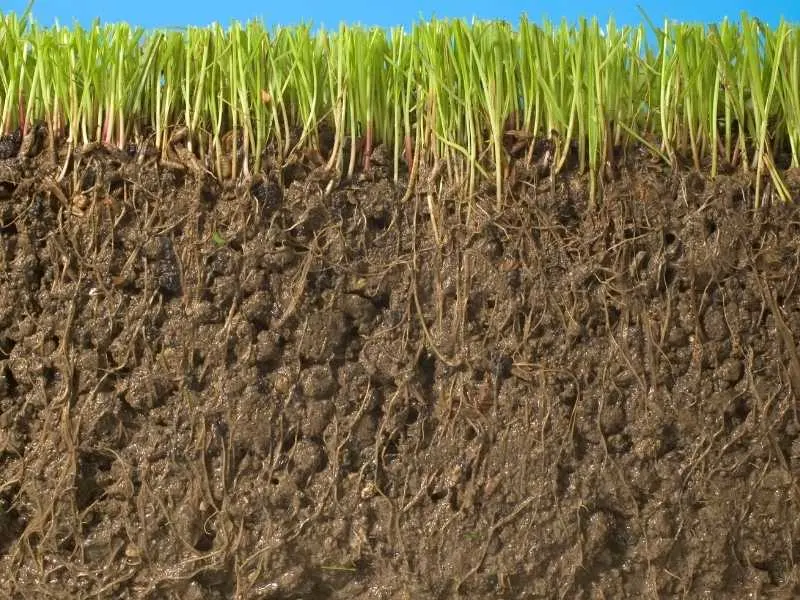
What Is Fibrous Roots?
Fibrous roots are a network of thin roots of almost equal diameters. Unlike in the taproot system, fibrous roots have no primary root, but the whole system emerges from the base of the stem.
Below are some facts about fibrous roots:
- This root system is primarily found in monocots and ferns.
- The roots are short and occupy a small surface area.
- They’re poor in anchoring the plant in the soil, and most are easy to uproot.
- They form after the first root, also known as radicle, falls off.
- Fibrous roots grow shallow in the soil and mostly horizontally.
- Unless modified for storage, most roots in a fibrous system have about the same thickness, with all developing from one spot.
- In fully developed plants, this root system appears like a mat underneath the plant.
- Fibrous roots better prevent soil erosion than taproots, as they firmly hold the surface soil together.
Modifications of Fibrous Roots
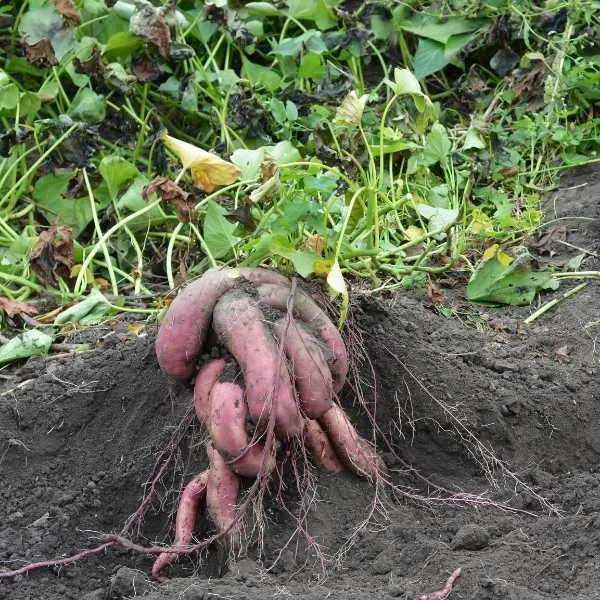
Fleshy Fibrous Roots
As the name implies, these modified fibrous roots are fleshy from accumulating food for future use by the plant. Their cells are modified to store products of photosynthesis and usually enlarge as more food is packed up.
The fleshy fibrous roots are further divided into tuberous, fasciculated, and annulated roots. Tuberous roots occur singly with no particular shape, such as in sweet potatoes while fasciculated roots occur in clusters such as in dahlia and asparagus.
In contrast, annulated roots appear in a ring-like structure, more like disks placed on one another all over the surface, such as in ipecac.
Stilt Roots
These roots are short and thick and mainly grow on the stem’s basal node. They grow toward the soil in an oblique direction and develop fibrous roots once they penetrate the ground.
Stilt roots develop mainly in narrow stemmed plants for support as they attain great heights.
Prop Roots
They appear as large horizontal branches to offer extra support to plants. An excellent example is the banyan tree. Prop roots grow higher in the stem than stilt roots and are usually larger in diameter.
15 Plants with Fibrous Roots
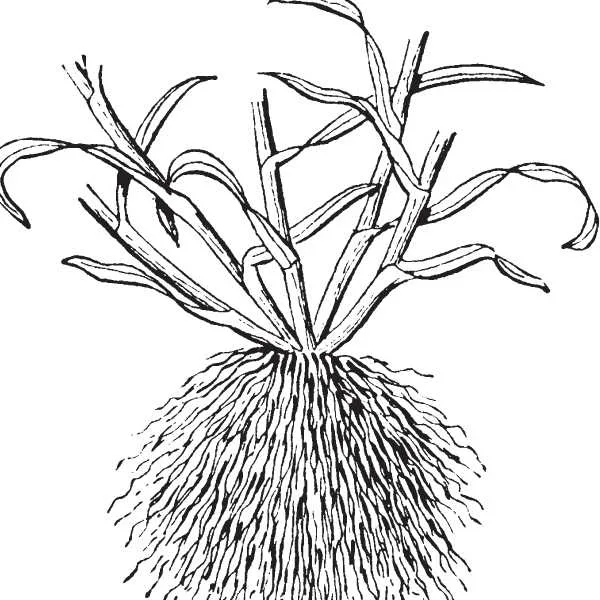
Here are some of the most popular fibrous root plants names:
#1. Onion
Onions have very tiny but numerous roots. The roots grow shallow in the soil, and they lack efficiency in water intake. You’ll need to water your onions regularly, especially when the bulbs haven’t enlarged enough.
However, onions recover well after a drought.
#2. Orchids/ Orchis
The roots of orchids are fleshy and the size of the palm of a human hand at maturity. Plus, these thickened fibrous roots develop finger-like outgrowths on the sides, possibly to store more food.
The orchids mainly grow in southern Central America and northeast South America.
#3. Sugarcane
Sugarcanes develop stilt roots to support the thin stems as they attain more height. The roots grow from the lower nodes near the soil to support the plant as it grows taller. Even so, the roots are not visible in young sugarcane plants.
#4. Maize

Maize (Zea mays) develops similar stilt roots as sugarcanes. They grow at the stem nodes near the soil and offer extra support to the plant. Mostly, the stilt roots get thicker as the plant gets taller.
#5. Asparagus
The roots in asparagus modify to fasciculated fleshy fibrous roots that store food for later use by the plant. The fleshy adventitious roots appear in clusters at the base of the plant. Typically, they don’t run very deep into the ground.
#6. Screw Pine
Screwpines’ edible fruits are popular in the Atlantic, Pacific, and India. The plant is similar to maize and sugarcane in developing stilt roots at the lower nodes of the stem to rope it to the ground.
#7. Dahlia
Dahlia originated from Mexico and Central America at large. The more than 35 different species of dahlia feature modified fasciculated fleshy fibrous roots. And the roots thicken to different sizes and shapes but remain a cluster at the plant’s base.
#8. Grass
Grass can grow anywhere and everywhere. It’s possibly the most popular plant globally, with about 12,000 known species. The branches are thin, and so are its fibrous roots.
Grasses are referred to as surface feeders as their thread-like root structure does not penetrate deep into the soil.
#9. Sweet Potato
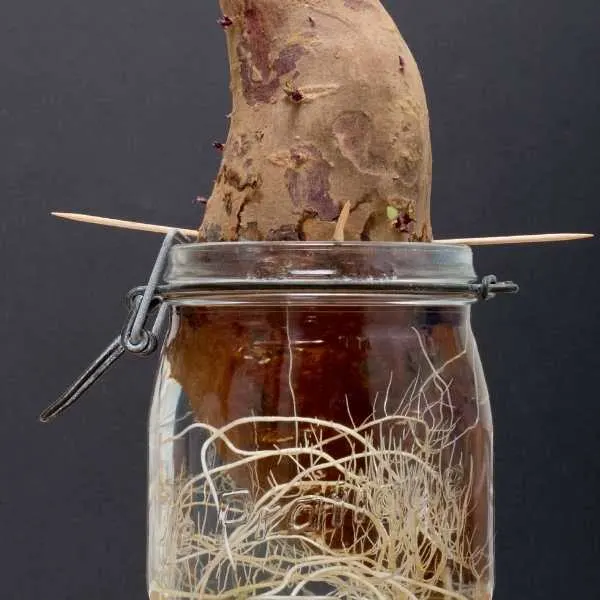
Yeah, that’s right, sweet potatoes have fibrous roots. The roots modify into tuberous fleshing adventitious roots, which grow and swell singly as they pack more food.
Sweet potatoes originated from South America before spreading to other parts of the world.
#8. Basella
Indians refer to the basella as spinach. It’s an edible plant grown as a vegetable and is easy to find in central and western Asia.
The fibrous roots in basella have swellings in intervals that resemble the beads of a necklace.
#11. Money Plant
Money plants survive by clinging onto or climbing on plants or structures such as walls. It uses its non-absorptive adventitious roots for support. The roots penetrate cracks or fissures on the support as the plant grows along.
#12. Wheat
Wheat has a fibrous root system, which starts as seminal roots at germination and later develops into nodal roots. The roots can go as deep as 3.5 feet into the soil for support and search of water and nutrients.
#13. Banana
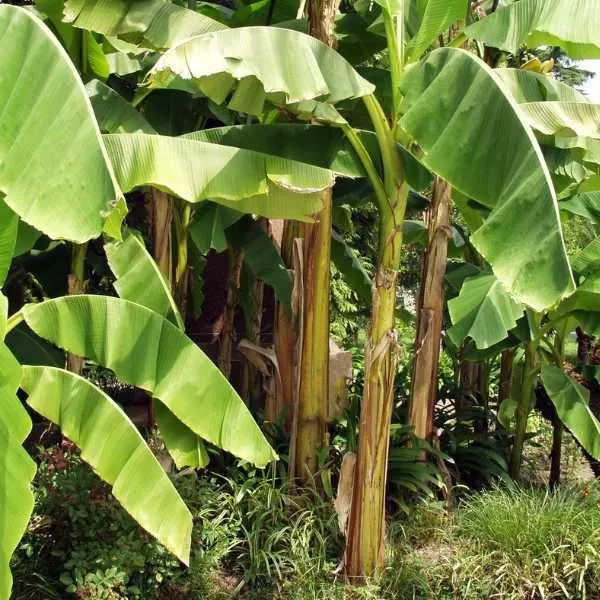
Banana plants are cultivated for their fruits but are mainly reproduced through suckers that grow from rhizomes.
The whole system gets support and nutrients supplied from hundreds of fibrous roots, rising from the rhizome.
The complete unit of rhizomes, suckers, and fibrous roots form a mass known as a mat.
#14. Banyan Tree
The banyan tree is a huge plant that can live for a very long time. It has normal fibrous roots and modified ones that grow from the stems.
The prop roots support its vast branches and supply them with water and minerals from the soil.
From a distance, the roots look like pillars planted vertically downwards.
#15. Portulaca
Portulaca or Moss Rose is a summer-spring flowering plant. It’s famous for thick coverings and is easy to grow even for beginner gardeners.
More than 80 species of portulaca exist globally, and all have fibrous roots and do well in warm and moist environments.
Final Thoughts on Plants with Fibrous Roots
Root types do not have to be as confusing as the uncountable plant types. We hope this article has shed enough light on the fibrous root system and some popular plants that feature this root system. Keep on gardening.
Related Articles:
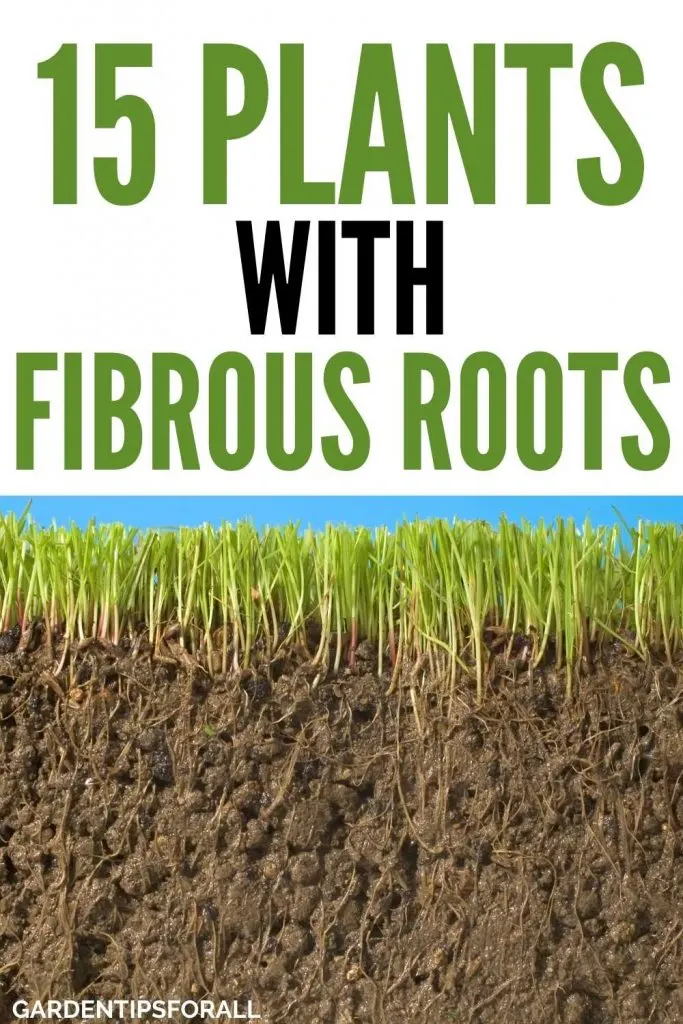
References
